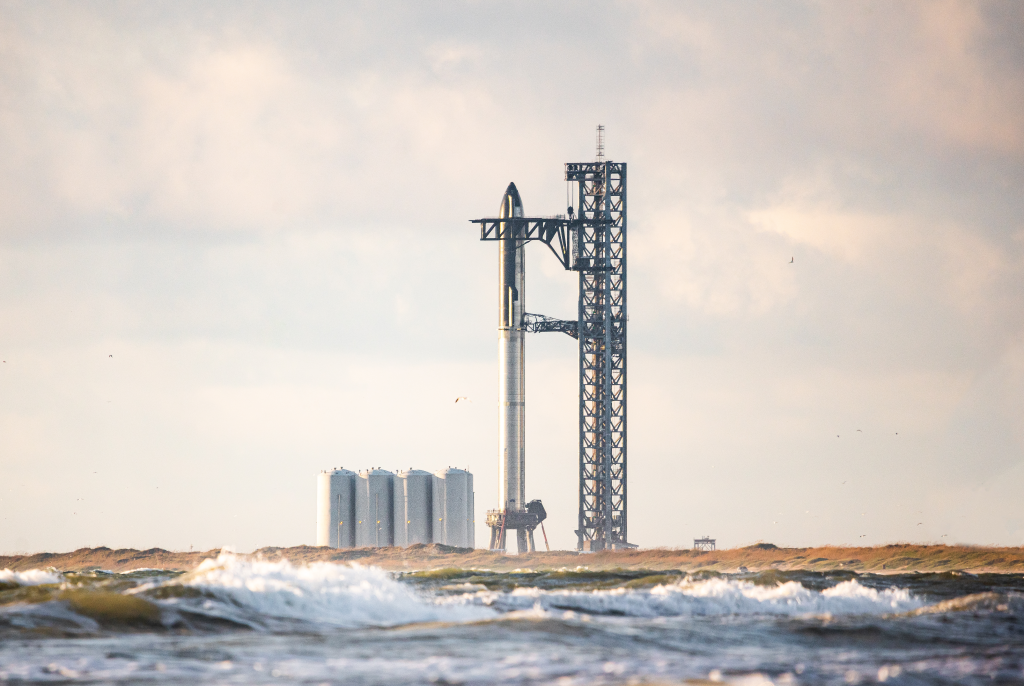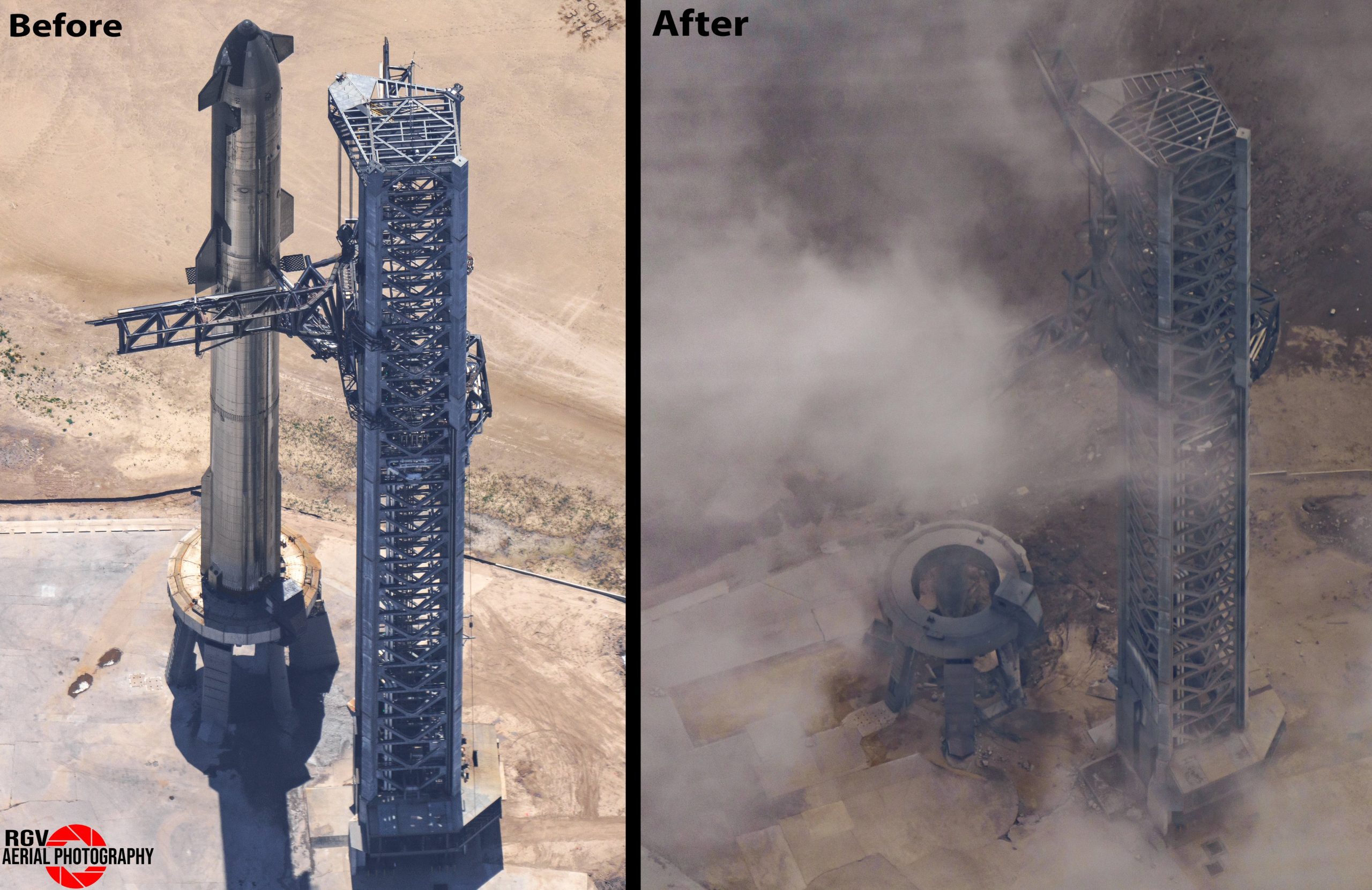On April 20, 2023, SpaceX conducted the first integrated flight test of its Starship launch vehicle, combining the Super Heavy booster (Booster 7) and the Starship upper stage (Ship 24). This test marked a significant milestone in aerospace engineering, as the Starship became the most powerful rocket ever flown, surpassing the thrust of the Saturn V from the Apollo era .

Launch Sequence and Events
- Liftoff: The rocket lifted off from SpaceX’s Starbase in Boca Chica, Texas, at 8:33 a.m. CDT (13:33 UTC). Notably, three of the 33 Raptor engines failed to ignite at liftoff, and additional engines shut down during ascent.
- Ascent: Despite engine issues, the vehicle passed through Max Q (the point of maximum aerodynamic pressure) and reached supersonic speeds. However, around 85 seconds into the flight, SpaceX lost thrust vector control of the 13 central engines, impairing the rocket’s steering capability.
- Stage Separation Failure: Approximately 2 minutes and 52 seconds after liftoff, the planned separation between the Super Heavy booster and the Starship upper stage did not occur. The vehicle began to tumble uncontrollably due to the loss of thrust vector control.
- Flight Termination: At about 3 minutes and 10 seconds into the flight, the Autonomous Flight Termination System (AFTS) was activated. The vehicle continued to ascend for approximately 40 seconds before the AFTS successfully destroyed it at an altitude of around 39 kilometers.

Aftermath and Impact
The launch caused significant damage to the launch pad and surrounding infrastructure, which SpaceX had not anticipated. Debris spread into nearby areas, including Boca Chica State Park. The Federal Aviation Administration (FAA) grounded the Starship program pending a standard “mishap investigation” to ensure public safety before future launches.
Despite the vehicle’s destruction, SpaceX considered the test a success, as it provided valuable data to inform and refine future designs and testing protocols. NASA Administrator Bill Nelson and European Space Agency Director General Josef Aschbacher, among others, congratulated SpaceX on the milestone.

This test flight was a crucial step in SpaceX’s iterative development approach, aiming to create a fully reusable launch system for missions to the Moon, Mars, and beyond.
On April 20, 2023, SpaceX conducted the inaugural integrated flight test of its Starship launch vehicle, marking a significant milestone in aerospace engineering. This event showcased the immense capabilities of Starship, which became the most powerful rocket ever flown, surpassing the thrust of the Saturn V from the Apollo era.
The test flight aimed to assess the integrated performance of the Starship spacecraft and the Super Heavy booster. Lifting off from SpaceX’s Starbase in Boca Chica, Texas, the rocket ascended to an altitude of approximately 39 kilometers. Despite the vehicle’s destruction less than four minutes into the flight, the mission provided invaluable data that will inform and refine future designs and testing protocols.



Comments(1)